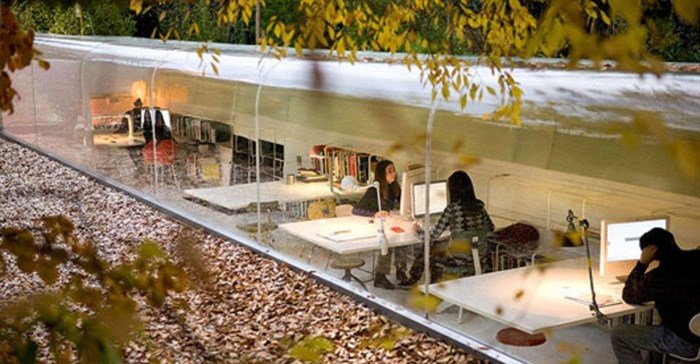
Greener and better ventilated offices can lead to better performance of employees. jingdianjiaju1/flickr
A recent study by teams from Harvard and Syracuse Universities focused on indoor air quality. The researchers simulated environments with different levels of ventilation, carbon dioxide, and emissions from common office products.
Employees were tested under two different conditions. One condition involved workers undertaking their regular duties in typical office building conditions. On other days, employees undertook their regular task in a simulated “green condition” where ventilation was improved, and levels of carbon dioxide and emissions were reduced.
Results showed that employees in the green condition environment performed 61% better on cognitive tasks than in the standard office conditions. Further, by doubling the ventilation in the green condition environment, cognitive performance increased by more than 100%.
Though plants were not included in this study, other research has shown that adding greenery to office environments increases not only satisfaction and productivity but also the perception that air quality had improved.
A further study conducted on 10 different green-certified buildings found employees had 30% fewer headaches and respiratory complaints in the green office environment. The study also showed employees performed nearly 27% better on cognitive tasks. Finally, workers in the study slept better at night, tracked by a wristband measuring sleep quality.
The focus on employee well-being continues to rise, with research indicating almost 90% of companies invest in corporate wellness programs. While these programs aim to improve health and reduce absenteeism, coming to work while sick has a high cost to employers.
The impact of “presenteeism” - working while ill - has been shown to cost $150 billion in lost productivity in a US study. In Australia, insurance company Medibank estimates put the overall cost of presenteeism to the Australian economy at A$34.1bn, equating to a decrease in gross domestic product (GDP) of 2.7% compared to a scenario where there wasn’t any.
The cost of providing better quality environments in the workplace may be considered a factor limiting organisations from implementing change. However research has shown that spending just US$40 per person, per year on indoor air quality resulted in a $6,500 increase in employee productivity.
 These findings suggest that improving the quality of the indoor environment is an important focus for organisations seeking to improve employee performance and well-being.
These findings suggest that improving the quality of the indoor environment is an important focus for organisations seeking to improve employee performance and well-being.































